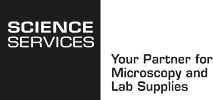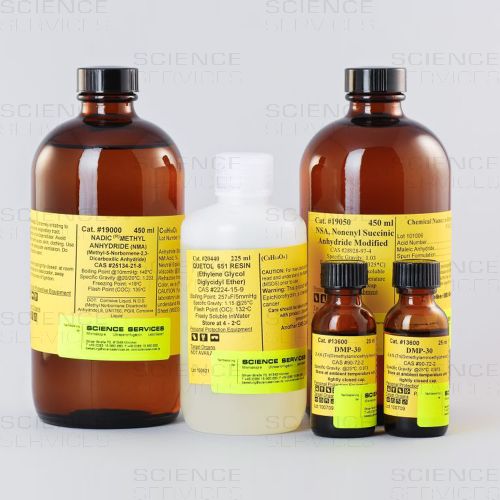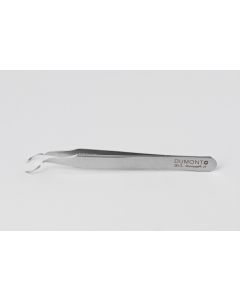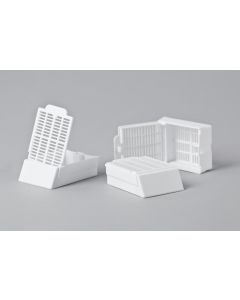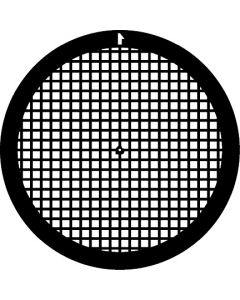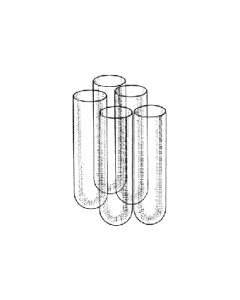Quetol 651-NSA
A water miscible epoxy resin used for both light and electron microscopy. Its low viscosity permits easy infiltration and embedding, and yields light-colored blocks.
Product Details
Description
Quetol 651 is a water miscible epoxy resin with a low viscosity affording easy embedding, infiltration, sectioning and staining. Characterized by low electron scattering, it can be used for both light and electron microscopy.
Semi-thin sections approimately 0.2um thick embedding in QUETOL 651 are suitable for examination with an ordinary electron microscope operating at 100 kV.
This method uses QUETOL 651 (EMS Catalog #20440) and the epoxy resin, Nonenyl Succinic Anhy-dride (NSA) (EMS Catalog #19050) and NMA (EMS Catalog 19000) as hardener and DMP-30 (EMS Catalog #13600) as accelerator. QUETOL 651 is an ethylene glycol diglycidyl ether, an epoxy resin of low viscosity. It is a light-colored epoxy resin with a viscosity of 15 cps at 25 degrees C. It is readily miscible with water, alcohol, acetone, n-butyl glycidyl ether, etc. It acts as a dehydrating agent, and combines chemically in any cured epoxy resin formulation.
The following mixture is recommended for this method:
| QUETOL 651 | 35 ml |
| NSA | 54 ml |
| NMA | 11ml |
| DMP-30 | 1.5-2.0 ml |
This mixture has a low viscosity, and is therefore easy to handle and penetrates readily and complete-ly into the specimen. It sets in about 24 hours at 60 degrees C and yields a light yellow block which is suitable for sectioning at 20 degrees C. This final hardness of the blocks can be adjusted by altering the ratio of QUETOL 651 and NSA.
Tissue sample sizes are approximately 2 x 2 x 1 mm, since a section of an area of approximately 2 x 2 mm is suitable for mounting on a grid 3 mm in diameter. The pieces are fixed in buffered aldehyde so-lution, postfixed in buffered osmium tetroxide solution, washed in a non-phosphate buffer, and should then be stained en block with aqueous uranyl acetate. After dehydration in graded alcohol or QUETOL 651, the following infiltration procedure is appropriate. n-Butyl glycidyl ether (n-BGE) is employed as an auxiliary to infiltration. All steps are carried out on a shaker at room temperature.
Embedding:
| Dehydrating agent /n-BGE (1:1) | 30 minn |
| BGE | 30 minn |
| BGE/QUETOL 651 mixture (1:1) | 1-2 hr. |
| QUETOL 651 | mixture 2-3 hr. |
Embed in gelatin (or polyethylene) capsules and cure in an oven at 60 degrees C for about 24 hours.
Reference: Kushida, H. and Kushida, T. Journal of Electron Microscopy, Vol 31, No. 2, 206-209, 1982.
More Information
| Application |
LM
TEM
|
|---|---|
| Base |
Epoxy
|
| Mandatory sign |
Tightly sealed goggles

Protective gloves

|
| Signal word |
Warning
|
| Symbol GHS |
GHS07
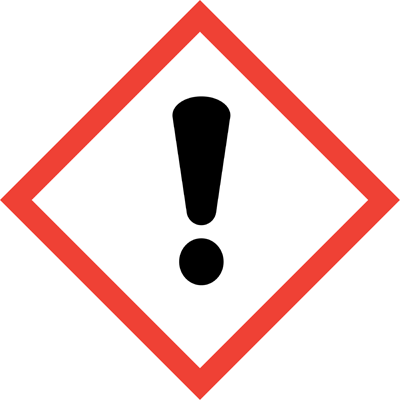
GHS08
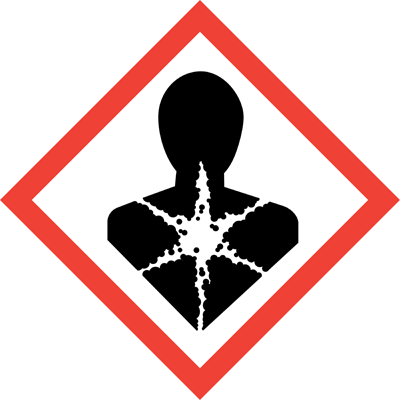
|
| Component Parts | 225ml Quetol 651, 450ml NMA , 450ml NSA, 50ml DMP-30 |
| Packing Unit | kit |
| Property |
water-based
|
| Shipping Class |
Hazardous Good LQ
|
| Storage Temperature |
0-5°C
|
| SDS (multilingual) | E20440, E19000 |
| SDS (multilingual) | E19050 |
| SDS (multilingual) | E13600 |
